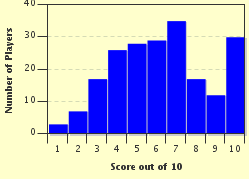Quiz Answer Key and Fun Facts
1. Sauerbraten is basically a pickeled pot roast - "sauer" as in pickeled or marinated + "braten" as in roasted. The flavor is anything but basic. Which unusual ingredient is often added to the marinade?
2. The German word Leberkäse means "liver cheese." Sounds bizarre. What kind of cheese is traditionally used in Bavarian Leberkäse?
3. Don't wipe the kitchen floor with a Rollmops - eat it instead. What's a Rollmops?
4. Yummy - caramelized pancakes, shredded and served warm with a fruit compote and a dusting of powdered sugar. What's the unpleasant-sounding name for this delicious Austro-German dessert?
5. It's food, not physics. In the midwestern U.S., it's called farmer cheese; in Hebrew it's gvina levana; in France it's fromage à la pie. According to the Roman writer Tacitus, the Germans invented it about 2,000 years ago - he called it "lac concretum" ("thick milk"). What's the German name for this dairy product?
6. In 2009, the European Union recognized Maultaschen as a regional specialty of the German state of Swabia, so "officially" true Maultaschen can only be produced there. It's traditionally eaten on Good Friday, a time of religious self-denial. Why?
7. Frankfurter Würstchen? Not a hot dog! In Germany, by law, it's not a "Frankfurter" unless it's produced in or near the City of Frankfurt am Main. In what other way do true German Frankfurters differ from their American cousins?
8. Schnitzel comes from an Old German word for "cut." It's prepared in many different ways in Germany and Austria. What type of meat (or meat product) is always used in Wiener Schnitzel?
9. The Prussian King Frederick the Great (Frederick II) is famous for his military victories, but he also revolutionized German eating habits. How so?
10. "Ich bin ein Berliner." Oh, really? In most regions of Germany, these sweet treats are called "Berliners." In Berlin, they're called "Pfannkuchen." What's the Anglo-American version called?
Source: Author
ignotus999
This quiz was reviewed by FunTrivia editor
WesleyCrusher before going online.
Any errors found in FunTrivia content are routinely corrected through our feedback system.


